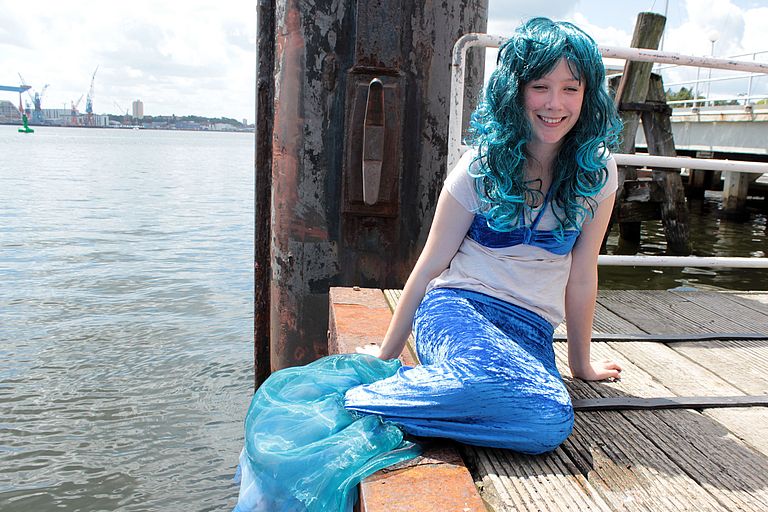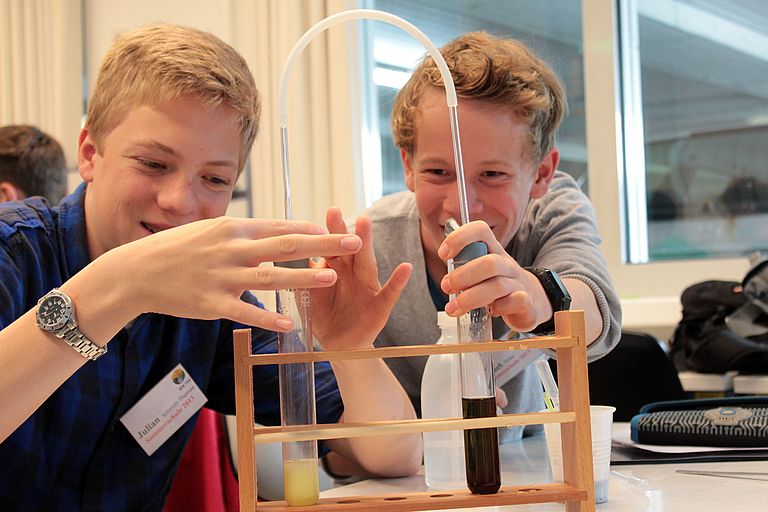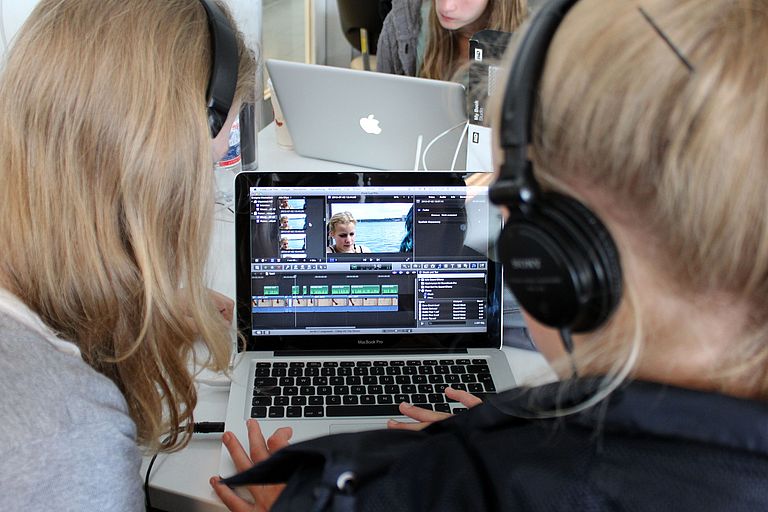Little Mermaids and Sand-Drawn Images
Students produce films on oxygen minimum zones as part of GEOMAR’s Summer School
Casual observers were amazed last week as they passed by the wharf to find a Little Mermaid with blue hair sitting at the Reventlou pier in Kiel, sadly looking into the water. "What are you doing?” a little girl demanded to know. "We’re making a video about marine research," was the surprising answer.
Stuck in the mermaid costume was 14-year-old Anneke from Langwedel in Holstein. She was one of 12 participants of the Summer School "Oxygen Minimum Zones - where the ocean is gasping for air," which the GEOMAR Helmholtz Centre for Ocean Research Kiel is organizing jointly with the Special Research Project 754 of the Deutsche Forschungsgemeinschaft. During the first two weeks of summer vacation, young people aged 14 to 16 learned where and why in the oceans of vital oxygen is scarce, what impact this has on the animals and plants in the sea, and how scientists study these zones.
Typically, mermaids are not part of these serious scientific topics. But part of the summer school is also put into movies what they have learned so that other young people may understand the issues at hand. And the participants chose this special blue mermaid as the narrator in their video about nutrient turnover in the ocean. "We want to show younger people in an easily understandable video what we have learned here," said the 15-year-old Lea from Bad Segeberg, "and therefore we thought of a film where a mermaid explains the whole thing."
But not only mermaids have supporting roles in these student videos: In a sequence of images drawn in sand, Phillip Fish gets a prediction on the next intrusion of oxygen-rich North Sea water into the Baltic Sea from “Oracle Octopus”. And reporter Michel (14) from Kiel guides the audience through different processes in the water column.
The students obtained the expertise required for this purpose during the first week of summer school lectures from experts in the SFB 754 at GEOMAR, and from their own experiments on various aspects of marine research. Knowledge of the practical work of oceanographers was learned during a day trip to the Baltic Sea aboard the research vessel ALKOR. "The best thing was that we didn’t just watch on board, but actually had to do all the work as well, even myself," said Michel with clear excitement.
During the second week, the challenge was to incorporate the scientific topics for the videos into an engaging background story. Here, after a one-day introduction, the young participants were transformed into screenwriters, directors, cinematographers, sound engineers and cutters. Under the guidance of the GEOMAR staff and additional experts on film technique, many hours of video footage were created that had to be cut and condensed into an appealing and informative film of a few minutes. "I don’t know what was more exhausting," Mermaid Anneke said, "the endless sitting still in front of the camera or the many changes to the film during the cutting work."
The premiere of the video will take place on 18 August at the Open House of GEOMAR, where participants come together once again to show the results of their work to the public. Afterwards, the films will be shown on the student video website of GEOMAR under https://sfb-outreach.geomar.de.
The suggestion that she’d slip back into her mermaid costume at the Open House for an autograph session was met with little enthusiasm by Anneke. But all participants will proudly present their other experiments and movies.
Contact:
Dr. Joachim Dengg (GEOMAR, Coordinator for school programms), jdengg(at)geomar.de
Jan Steffen (Communication & Media), Phone: +49-431 600 2811, presse@geomar.de





